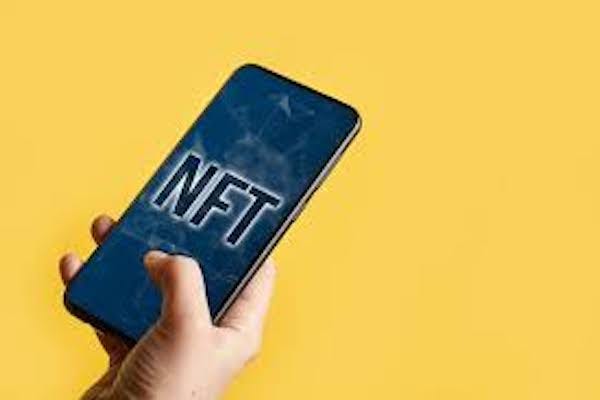This content originally appeared on Level Up Coding - Medium and was authored by Carpenter Wellington PLLC

NFTs, or nonfungible tokens, have been sweeping headlines as they cause disruption in the art world and beyond. In February 2021, an NFT of the Nyan Cat video meme sold for over $500,000. Afterward, a purchaser bought a LeBron James NFT for $208,000, displaying a video clip of the star athlete dunking a basketball. NFTs really got cast into the spotlight in March 2021 with the $69.3 million sale of a digital collage at the art auction house Christie’s.
The NFT explosion has created new opportunities for artists, musicians, consumers, investors and other digital creators. The surge in mainstream appeal has created both promising innovation and novel issues.
NFTs: An Overview
Nonfungible means not mutually interchangeable. Hence, these tokens represent unique digital assets. A person cannot exchange one for something of equal value. For example, a Van Gogh painting or a video clip of a specific moment in a sports game are both unique and not mutually interchangeable.

An interesting aspect of NFTs is that the buyer is not obtaining rights to the intellectual property of the work represented by a particular cryptocurrency token. Purchasing an NFT entitles you to a digital receipt of your ownership of the NFT. However, it does not entitle you to ownership of the digital asset or underlying artwork. This creates many novel and complex legal issues about IP rights and enforceability for platforms, artists, and NFT owners.
NFTs are not a new innovation. There was an NFT craze a few years ago on CryptoKitties, a blockchain game on the Ethereum network. People bought and sold unique images, video clips, and animations of CryptoKitties online at a furious pace. The buzz for trading digital collectibles eventually expanded to sports memorabilia and other forms of art.
In 2020, the NFT market grew by 300%. Venture capitalist Tal Elyashiv notes that the NFT is growing in a number of significant ways. “It wasn’t just because of the number and total value of transactions. Major growth can also be seen in the number of dedicated marketplaces, the number of active wallets transacting NFTs and the types of assets using NFTs.”
Online Marketplaces
The trading of NFTs occurs on online marketplaces using cryptocurrencies. When you purchase an NFT, the transaction is recorded on the blockchain. As an open distributed ledger, the blockchain instills trust in its reliability. Purchasers of NFTs are provided with a unique digital certificate that certifies the ownership history of the associated object. The authenticity can immediately be verified by looking at the blockchain ledger.
One of the largest online marketplaces for trading NFTs is OpenSea. OpenSea is a peer-to-peer marketplace for trading digital collectibles, CryptoKitties, and various other digital assets. Devin Finzer, the co-founder and CEO of OpenSea, states that NFTs usually trade for $100 to $1,000 on the platform.
The NBA’s Top Shot, a blockchain-based marketplace for trading digital collectibles of NBA highlights and artwork, has generated over $230 million in sales. A similar NFT trend has taken hold in the music industry. Canadian musician Grimes sold $6 million in digital artworks, including song clips, on Nifty Gateway. Nifty Gateway is another online marketplace for nonfungible tokens that has exploded in popularity recently.
Jack Dorsey, the founder and CEO of Twitter, sold the first tweet as an NFT to a Malaysian blockchain company CEO for $2.9 million. The first tweet says, “just setting up my twttr”. The buyer, Sina Estavi, now owns a digital certificate of the tweet. The tweet itself will remain live on Twitter.
Mr. Estavi, who is the CEO of a blockchain company called Bridge Oracle, remarked: “This is not just a tweet! I think years later people will realize the true value of this tweet, like the Mona Lisa painting.” Mr. Estavi had also bid on an NFT of a tweet from Elon Musk. Mr. Estavi was the highest bidder before Musk decided to no longer make the tweet for sale.
New Opportunities for Artists
NFTs have created new opportunities for independent artists like Josie Bellini. Bellini has sold around 300 of her paintings in the form of NFTs. One of her art pieces is currently selling for $450,000. She receives at least a 5% royalty each time a person trades an NFT of her artwork on the blockchain. “It’s so amazing that even if it gets traded 10 or 20 times or more, I’ll still be getting my fee for it. That’s totally not how the art world has worked until now,” says Bellini.
Mike Winkelmann, who goes by the artist name Beeple, sold a digital image online through the esteemed art auction house Christie’s for $69.3 million. After Jeff Koons and David Hockney, this makes Beeple the third most-expensive living artist.
Noah Davis, a specialist in post-war and contemporary art at Christie’s in New York, was responsible for arranging the $69.3 million Beeple sale. He explains that NFTs enable the relevant knowledge about a work of art to be “permanently systematized, automated and accessible by anybody.” With the sale of Beeple’s digital collage, Christie’s became the first major auction house to sell a work that only exists digitally.
Tom Richardson, a digital media professor at Columbia University, calls the NFT trend “fascinating”. Some see the surge in interest in nonfungible tokens as bubble behavior. Despite the exorbitant prices, others see NFTs as providing artists with new ways to monetize their fan base.
NFTs (Nonfungible Tokens) Propel Boom in Digital Art was originally published in Level Up Coding on Medium, where people are continuing the conversation by highlighting and responding to this story.
This content originally appeared on Level Up Coding - Medium and was authored by Carpenter Wellington PLLC
Carpenter Wellington PLLC | Sciencx (2021-04-08T17:01:56+00:00) NFTs (Nonfungible Tokens) Propel Boom in Digital Art. Retrieved from https://www.scien.cx/2021/04/08/nfts-nonfungible-tokens-propel-boom-in-digital-art/
Please log in to upload a file.
There are no updates yet.
Click the Upload button above to add an update.
